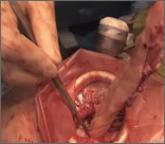Dr. Pinkerton is an internationally respected expert in the field and provided a balanced overview of CE/BZA and how it might be used in practice. Dr. Pinkerton disclosed that she personally receives no current support from Pfizer, but that she was supported by Pfizer years ago.
This potential conflict of interest was reported in the article.
I am proud to serve as a key researcher, consultant, and writer for publications exploring the newest hormonal option for menopausal women—CE/BZA. All of my contracting and fees for my research and consulting with Pfizer have been paid through the University of Virginia, not to me personally. This allows me to be involved in innovative women’s health research and disseminate results without the same conflicts as those who receive reimbursements directly from Pfizer. My relationship to any pharmaceutical company with which I am involved is always through my university and disclosed on every paper, presentation, and talk that I give.
The best way to learn about the pros and cons of a product is to be involved in the sentinel research, to have access to all data, including adverse effects, and to be able to evaluate who might be the best candidates for a new product in women’s health.
Although oral estradiol is inexpensive, women with a uterus also need a progestogen to protect against uterine cancer. It appears that the combination of estrogen and synthetic progestins carry a greater risk of breast cancer than estrogen alone. Estradiol is also available as a patch, gel, lotion, and ring but, again, needs to be paired with a progestogen if a woman has a uterus.
This new drug is well established in published randomized clinical trial data as an effective alternative to traditional estrogen-progestogen therapy (EPT) in symptomatic postmenopausal women with a uterus. Results from Selective Estrogens, Menopause, and Response to Therapy (SMART)1 randomized controlled trials (RCTs) have shown improvements in symptoms similar to those seen with EPT. These include a reduction in hot flash frequency and severity; a reduction in night sweats, with fewer sleep disruptions; and bone loss prevention. The effects on total cholesterol (an increase in triglycerides) and the drug’s mild effect on vulvovaginal atrophy (VVA) also are similar to those observed with EPT. The drug has a neutral effect on breast tenderness, breast density, and the risk of breast cancer.1,2 It also protects against endometrial hyperplasia and cancer and increases amenorrhea rates. VTE and stroke risks are expected to be similar to traditional oral hormone therapy (HT). The major benefit of CE/BZA, compared with traditional EPT, is the lack of significant breast tenderness and changes in breast density or vaginal bleeding often seen with traditional EPT.3
As for the benefits of soy for menopausal women, clinical data imply that phytoestrogens and soy foods may be of benefit for postmenopausal women. According to a recent review article by Messina4 (an international authority on phytoestrogens), isoflavone supplements relieve menopausal hot flashes if they have enough of the isoflavone genistein. Soy has shown benefits with regard to ischemic heart disease—by lowering low-density lipoprotein (LDL) levels and providing a source of omega fatty acids. However, no clear effect has been seen with soy for the prevention of bone loss. The effect on breast cancer risk is unclear. Soy binds to estrogen receptors, which could be harmful. However, soy may bind preferentially to estrogen-receptor beta, thus acting more SERM-like or protective, particularly if given during childhood or adolescence.
For any woman, the decision about using a food source, such as tofu, or isoflavone-rich supplements, such as one containing equol, should be based on a discussion with her clinician regarding her individual needs and the risks and benefits of all options.
In our Midlife Clinic at University of Virginia, we discuss over-the-counter products, lifestyle and dietary changes, and nonhormonal and hormonal options with our patients to help them identify the best choices.
Share your thoughts on this article! Send your Letter to the Editor to rbarbieri@frontlinemedcom.com. Please include your name and the city and state in which you practice.



